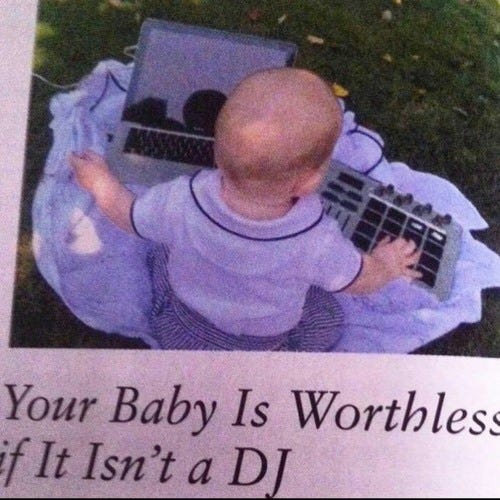Hey DJ can you play that song!
a short read on listening to and learning from sound selectors
An unreleased R&B track spun an hour into a Red Bull Music Academy radio show hosted by Earl Sweatshirt, quasi-underground phenom lyricist, and Knxwledge, producer-extraordinaire, has been haunting me for the past year… all I know about it for sure is that there are two distinct drum samples, one in the body of the record from The Vibrette’s ‘Humpty Dump’ via Q-Tip’s ‘Let’s Ride’ (the original drums are all ‘70s but the sample in question pulls from Jay Dee and Tip’s slowed and filtered iteration). The other opens the track, claps and kicks pulled this time from just Jay Dee on Slum Village’s ‘Tell Me’. I think Ty$ is on background vocals/harmonies, and it’s possibly Knxwledge on the boards, but it’s impossible to find. Scrolling through the crowd-sourced tracklist of the radio set, the description of the youtube recording, and shazaming the song have all culminated in squat; searching via sample has been fruitless as well. Nevertheless, the song kills: it’s got the warmest sound profile, brilliant sample selection and vocal production, and layers in pleas for forgiveness and emotional overextension within a now-frigid relationship.
It’s everything I want in a record, save for its nonexistence; but every time I come back to listen, I’m reminded of all the other brilliant music Earl and Knxwledge pulled together for this audio array: Ernest Ranglin’s triumphant “In the Rain”, two Mach-Hommy tracks released years after this set, “Can I Live” (featuring a pre-Ruff Ryders, pre-throwing a refrigerator at Diddy, Bad Boy-era LOX), Samiyam’s “Smoke Break” channeling Champion Sound Jay Dee bass synths, and Eleanore Mills’ “Telegram” (sampled by Statik Selektah on “Cliff Notes”!). This was my first time hearing a lot of these tracks, and I don’t know that I’d have gotten around to them on my own nor would they have ever been recommended to me in any one place or by any one app or algorithm. Years more of listening and digging on my own time and of my own initiative, perhaps I could’ve gotten to Ernest Ranglin or Eleanore Mills, but in one afternoon I fell into new music rabbit holes in reggae and soul, learned old samples, and discovered the undiscoverable.
My sentiments might ring treacly, but I really do love music curation as presented by actual human beings who can trace lineage or track distant branches of the diaspora and I think a lot of other people do too. An example, supplicated via mild self-involvement: my most popular playlist on Spotify (which I’ve never sent to anyone or shared anywhere) is a compilation of records I remember listening to as a child and eventual adolescent on Z107.9, Cleveland’s Hip-Hop and R&B station. I don’t listen to it much anymore, but it signifies both a deeply influential period in my personal life and a radio station whose taste I adored, listening to DJs select and mix records (brief aside: my favorite DJ moniker belongs to Z107.9’s then-primetime mixmaster, DJ Oneplustwo). Rap started with the DJ! And most music lives and dies by the disc jockey too.
David Foster Wallace, esteemed essay- and novelist, posits that film (as experienced in a theater) differs from every other visual and auditory media format in its dominance over all senses: it does not allow retreat, pausing, rewinding, skipping, conversation, entertaining other media simultaneously--it is all-encompassing. A film’s narrative, schema, visual language, take precedence over even your own thoughts across the length of its runtime, and we respect, even pay for the intrusion pro forma. Radio shows do not necessarily produce the same experience, but good ones do require presence and attention; your audition serves the selector’s whim. And live DJ sets, good ones, can hold you under their spell.
There are so many amazing resources to sample trusted tastes: Red Bull Music Academy archives, Boiler Room sets, interviews with musicians, the original Othertone show on Apple Music, new media venture OnAmp (hosting celebrity and civilian radio shows alike). I’ve learned so much just by listening--litter-picking the detritus from true curators’ spins. We should respect the importance of new auditory experiences, allowing our ears the waxy-handed massage of an expert as we relinquish control. Skepticism of online communities aside, to engage with music in this way is to bond with a DJ, to seek tutelage and build a relationship (even if only parasocial). If you want to touch grass, find DJs in your city (and DJs stopping by); trawl pubs and clubs until you find a musical home and listen to lovers rock while you nurse a buttery nipple at an Irish Bar in Central Square on a Tuesday. Keep your ears open too, whether outside listening to music stumbling errantly through car windows, considering TV programs with music as their center (Tremé and High Fidelity fit the bill), even walking past concert venues on busy nights to hear who’s in town. Ways of Hearing, an extremely short and worthwhile tract penned by Damon Krukowski, explores the many ways that our newly and largely digital audio existence has changed us including the proliferation of headphones. We lock ourselves into our own sound environments, siloing our listening, which feels antithetical to a medium sprung from our basest need as frontal-lobe-beset primates with dextrous tongues: communication. Moreover, sound is an integral part of how we dwell in physical space; if we don’t listen together, we don’t live together. The inverse is true too: even if we aren’t with each other, listening and learning in community brings us closer.




I’m looking for the Ethiopian song for years